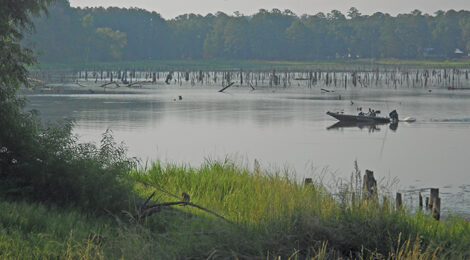
The Lowly State of Texas Lakes
Reservoirs simply need water to make the new lake effect happen resulting in good fishing.
Story and photography by Matt Williams
Prolonged drought is no stranger to Texas. It seems like the faucet always shuts down in one portion of the state or another each year, and 2023 has been no exception.
As October gave way to November, much of Texas is still in some form of drought with no real relief in sight. Some regions have been abnormally dry for years.
A quick check of the U.S. Drought Monitor in mid-October showed dry conditions to be the most widespread, and severe in central and eastern portions of state. Dozens of counties within a wide swath spanning as far south as Refugio County and as far north as Wilbarger County on the Texas/Oklahoma border were in red or brown zones depicting severe, exceptional, or extremely dry conditions. The path extends east to west from the Pineywoods to the western edge of the Hill Country as far as Mason and Bandera counties.
Signs of the Times
Signs of drought come in many different forms. Among the most obvious to the naked eye are parched landscapes starving for moisture and low water levels on public reservoirs and private stock tanks.
Low water is nothing new on the heels of a hot, Texas summer. But the extreme lows currently being witnessed on some reservoirs are anything but normal.
A few Hill Country reservoirs are extremely low and inching lower each day, according to Patrick Ireland of San Marcos. Ireland is a Texas Parks and Wildlife Department inland fisheries biologist who rides shotgun over more than a dozen lakes in the San Marcos/Austin district. The biologist said several lakes under his watch have been significantly low for months, mainly because day-to-day water usage demands and evaporation continue to outpace inflow.
One of the lakes — Canyon Lake — is well below its historic low.
************************************************************************
To read more, click here to SUBSCRIBE







